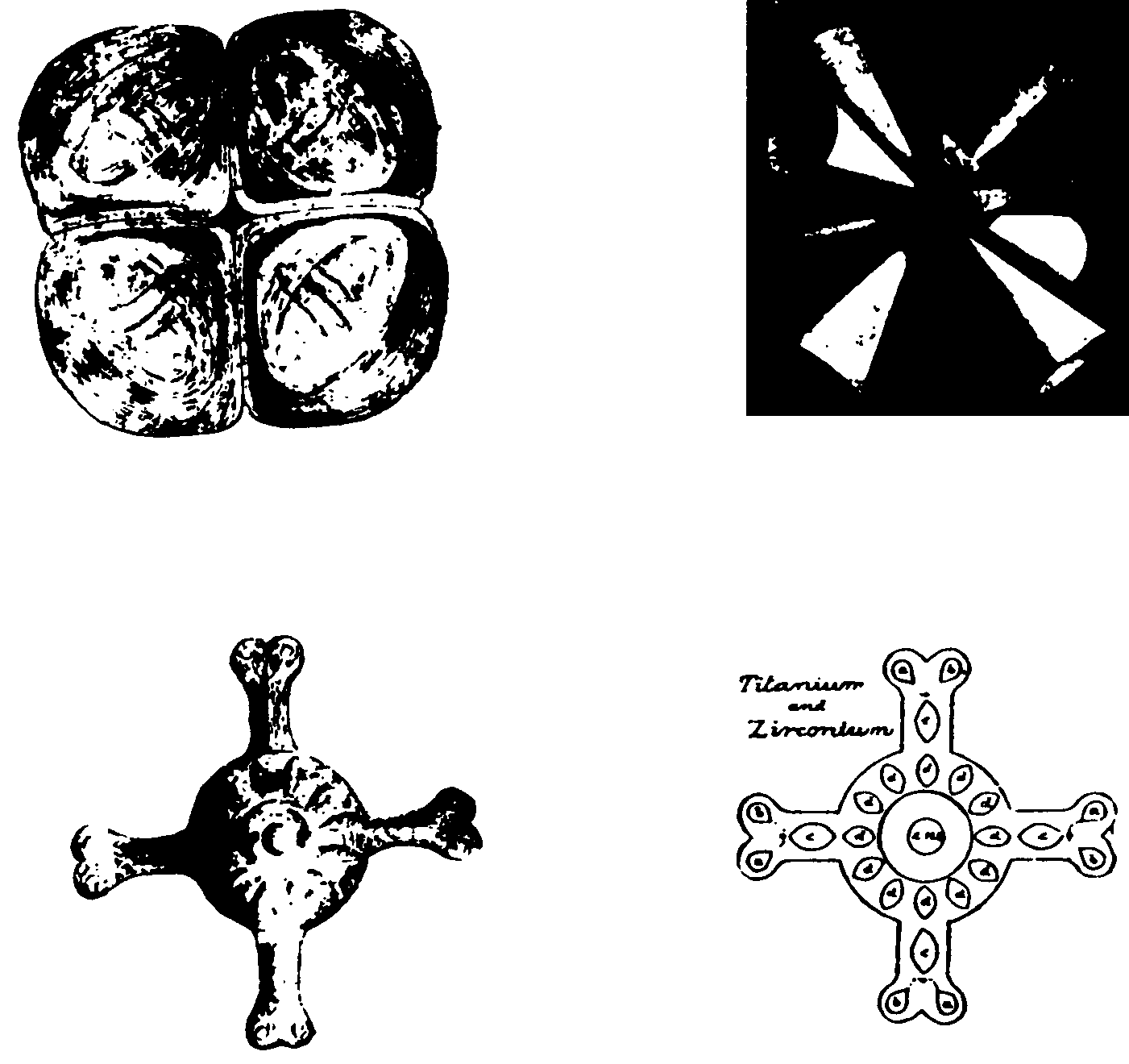
FIG. 117. TYPES OF OCTAHEDRONS
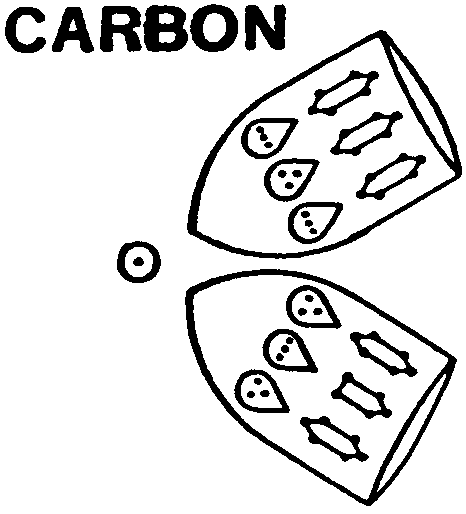
FIG.
118. TWO FUNNELS OF CARBON WITH LINKING ANU.


FIG.
118. TWO FUNNELS OF CARBON WITH LINKING ANU.
All these elements are tetravalent and have eight funnels opening on the eight faces of the octahedron. Here, as usual, we find that the number of funnels is twice the valence.
The conception of the four valencies of Carbon pointing to the four corners of a tetrahedron, so much used in organic chemistry, at once comes to the mind. It is obvious that if four of the eight funnels are used, these would give forces pointing in the required directions in space. This subject is further illustrated in the descriptions of the Carbon compounds in Chapter XIII.
6
216 Carbon 4 4 C27+4C26
22
864 Titanium (Ne120+8) 4 (Ti88+C27+C26+ 1)
+
12Ti14
40
1,624 Zirconium (Ne120+8) 4 (Zr212+C27+C26+1)
+
12Zr36
58
2.511 Cerium Ce667 4 (Zr212)
4
(Ca 160+ Ce36+ C27 + C26)
72
3,211 Hafnium Hf747 4 (Zr212 + 4Hf36)
4
(Ca160+Ce36+C27+C26
90
4,187 Thorium Lu819. 4 (Zr212+SbI28+Ac116)
4
(Ca160+ M646 + 2Li63+ C27
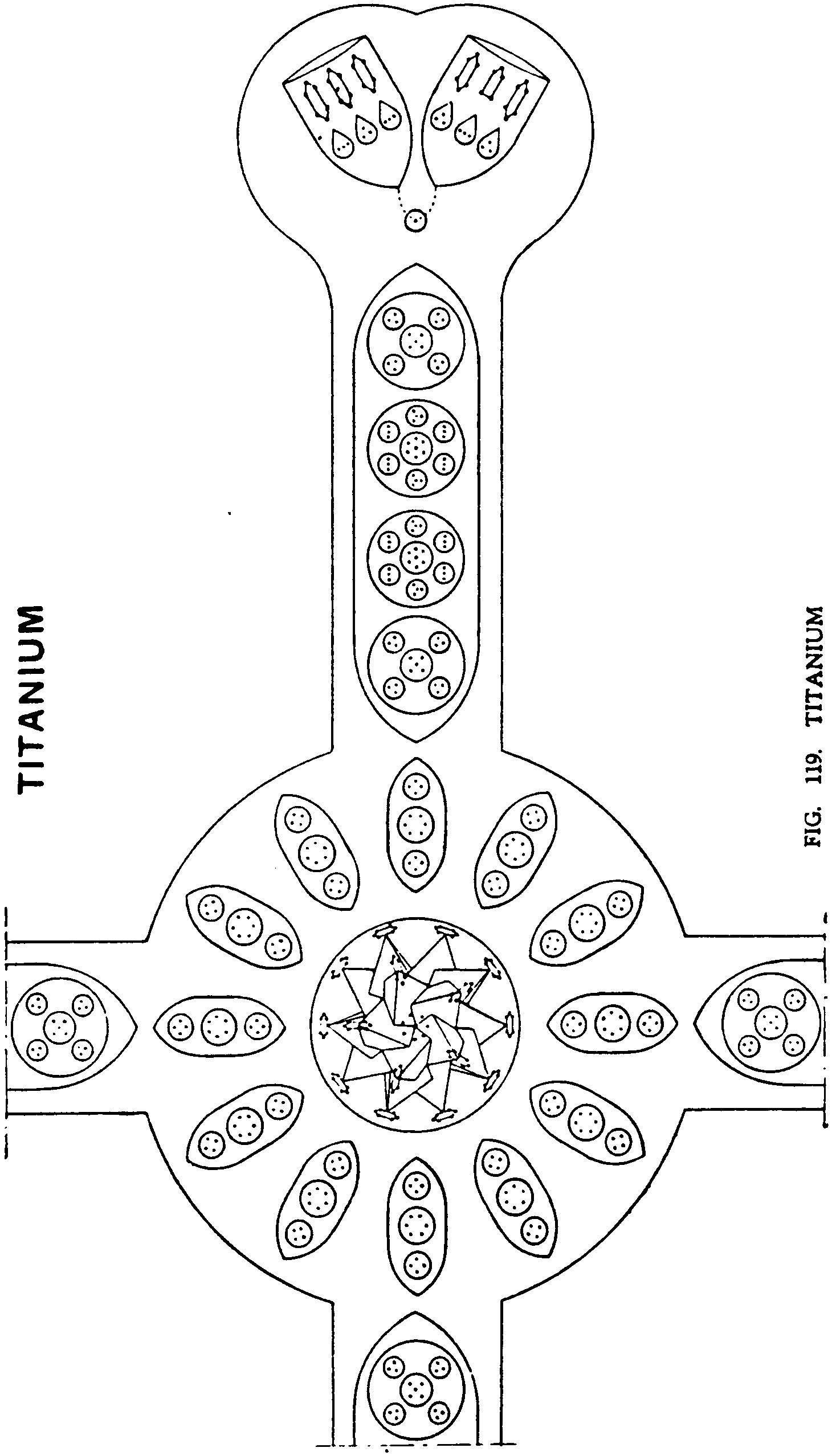
ATOMIC
NO. 6. CARBON
Carbon gives us the fundamental octahedron form, which becomes so marked in Titanium and Zirconium.
Central globe. In the centre of the,octahedron is a globe containing four Anu, each within its own wall, these lie on the dividing lines of the faces and each holds a pair of funnels together. It seems as though this Anu had been economically taken from one Ad6 in the funnels, to form the link. Fig. 118.
Funnels. The funnels are in pairs, one of each pair showing three " cigars " and having as its fellow a funnel in which the middle " cigar " is truncated, having lost one Anu. Each Ad6 has a leaf-like body at its base, the six together making up one Hydrogen atom.
Carbon
= 4+4C27.f-4C26
Centre
= 4 Anu
4
funnels of 27 Anu = 108 _
4
funnels of 26 Anu = 104 _
Total
= 216 Anu
ATOMIC
N 0. 22 TITANIUM
Central globe. The central body is made up of the five interlaced tetrahedrons, Ne120, with a ring of seven Anu round an eighth, that forms the minute centre of the whole. Into this elaborate body one hundred and twenty-eight Anu are built.
Round this centre comes a ring of twelve ovoids each holding within itself fourteen Anu, distributed among three contained spheres, two quartets and a sextet. This is a new device for crowding in material Fig. 119.
Funnels. Titanium has a complete Carbon atom distributed over the ends of its four arms, a pair of funnels with their linking Anu being seen in each. Then, in each arm, comes the elaborate body Ti88, with its eighty-eight Anu.
The protrusion of the arms in Titanium and Zirconium suggests the old Rosicrucian symbol of the cross and rose, but since they show at their ends the eight carbon funnels with their characteristic contents they justify their relationship.
Titanium
= (Ne120+8)+12Ti14+4(Ti88+C27-t-C26+1)
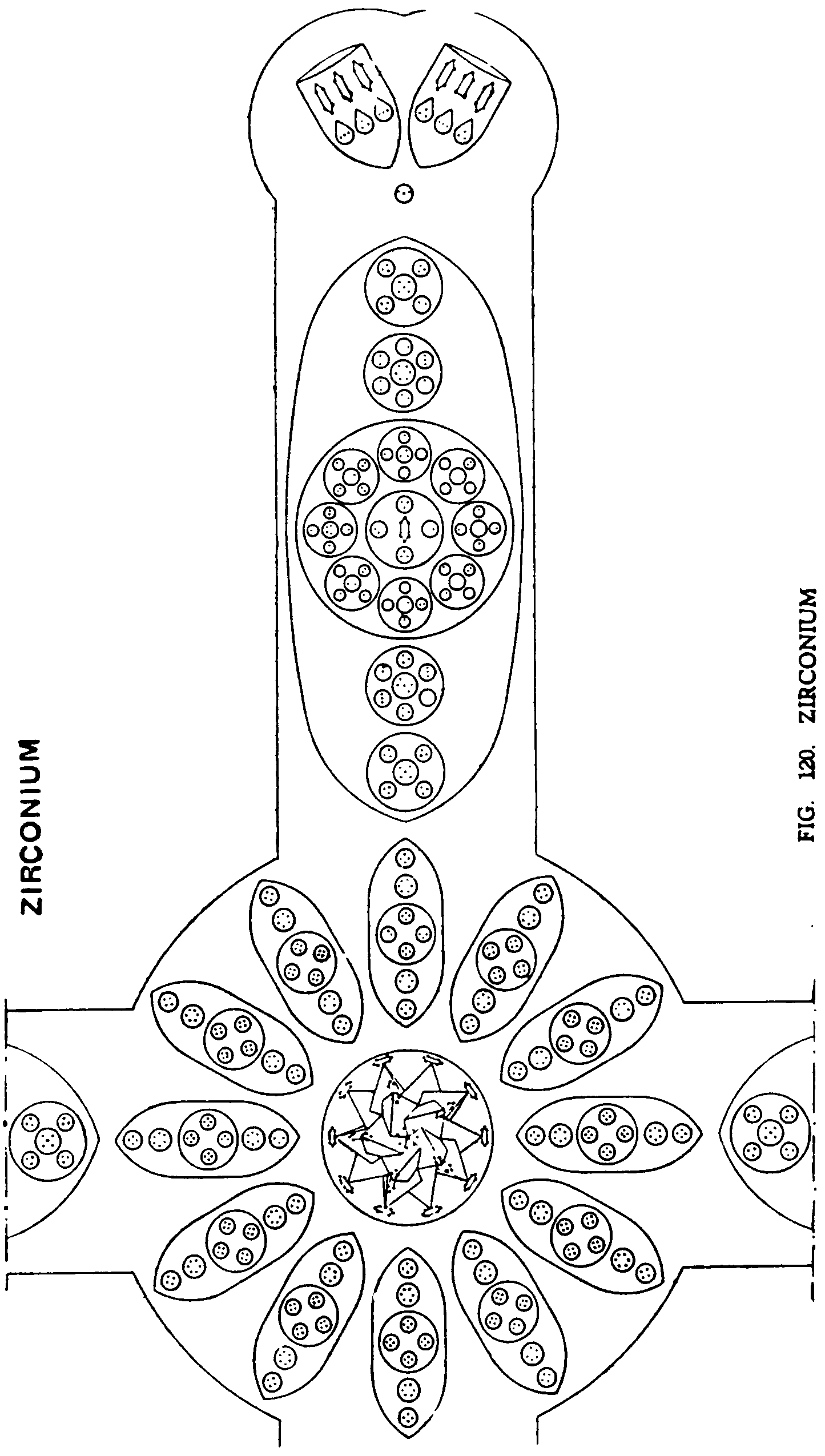
ATOMIC
No. ao. ZIRCONIUM
Zirconium has a similar design to Titanium, the Carbon atom being similarly distributed and the central body identical in pattern. Fig. 120.
Central globe. The central globe resembles that of Titanium, being Ne120+8, but the 12 ovoids in the ring are more elaborate, each containing 36 Anu instead of 14.
Funnels. The ovoid in the arm of Zirconium shows no less than thirteen secondary globes, four of which make Ti88. These in turn contain altogether 69 smaller spheres. So we have 212 Anu in each arm, Zr212. A whole Carbon atom is distributed over the ends of the four arms, as in Titanium.
Zirconium =(Ne120+8)+12Zr36+4(Zr212+C27+C26-f-1)
210
OCCULT CHEMISTRY
ATOMIC
NO. 58. CERIUM
This element has many of the characteristics of Carbon, Titanium and Zirconium, but the projecting arms which give Titanium and Zirconium the form of a cross are so masked by other projections that they now take their place as ordinary funnels, and we have once more the octahedron which in appearance resembles a corded bale.
Central
globe. The central globe is formed of a central group, Ce27, surrounded
by 20 ovoids Ce32. These are arranged on the pattern of the Radium centre.
This group, Ce667, is also found as the centre of Neodymium in the Tetrahedron
Group A. Fig. 121.
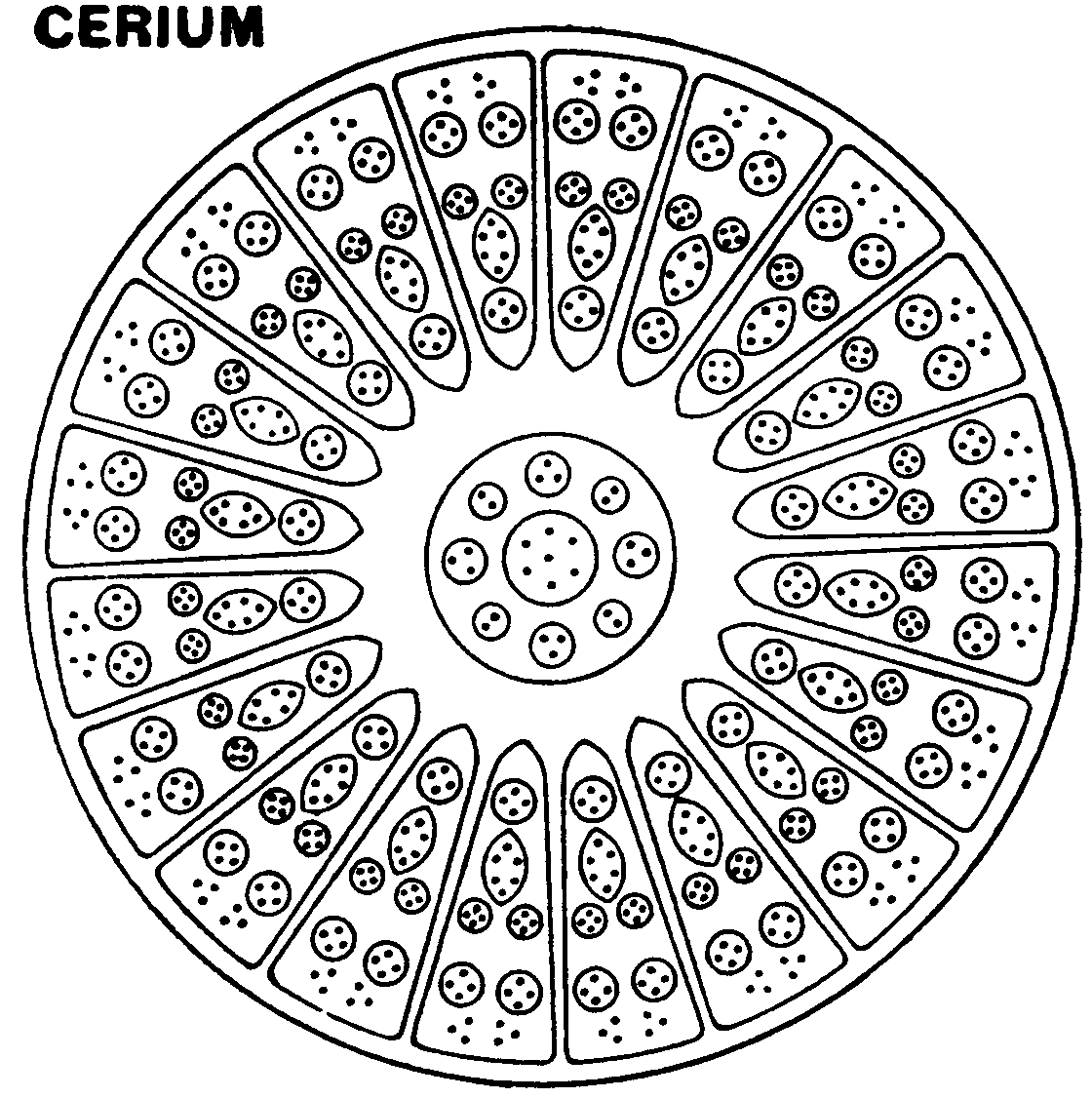
FIG.
121. CERIUM CENTRE, Ce667
Type B is partly made up of constituents from Calcium. First Ca45, then Ca7U, and then another Ca45. Next comes a new sphere, Ce36, containing 2 Moll and 2 1.7. At the mouth come two Carbon funnels. The characteristic Carbon atom thus appears as usual divided into four parts, though it is only in four out of the eight funnels. Oddly enough its little funnels have lost their linking Anu.
Cerium
=Ce667+4Zr212+4 (Ca160-1-Ce36-1-C27+C26)
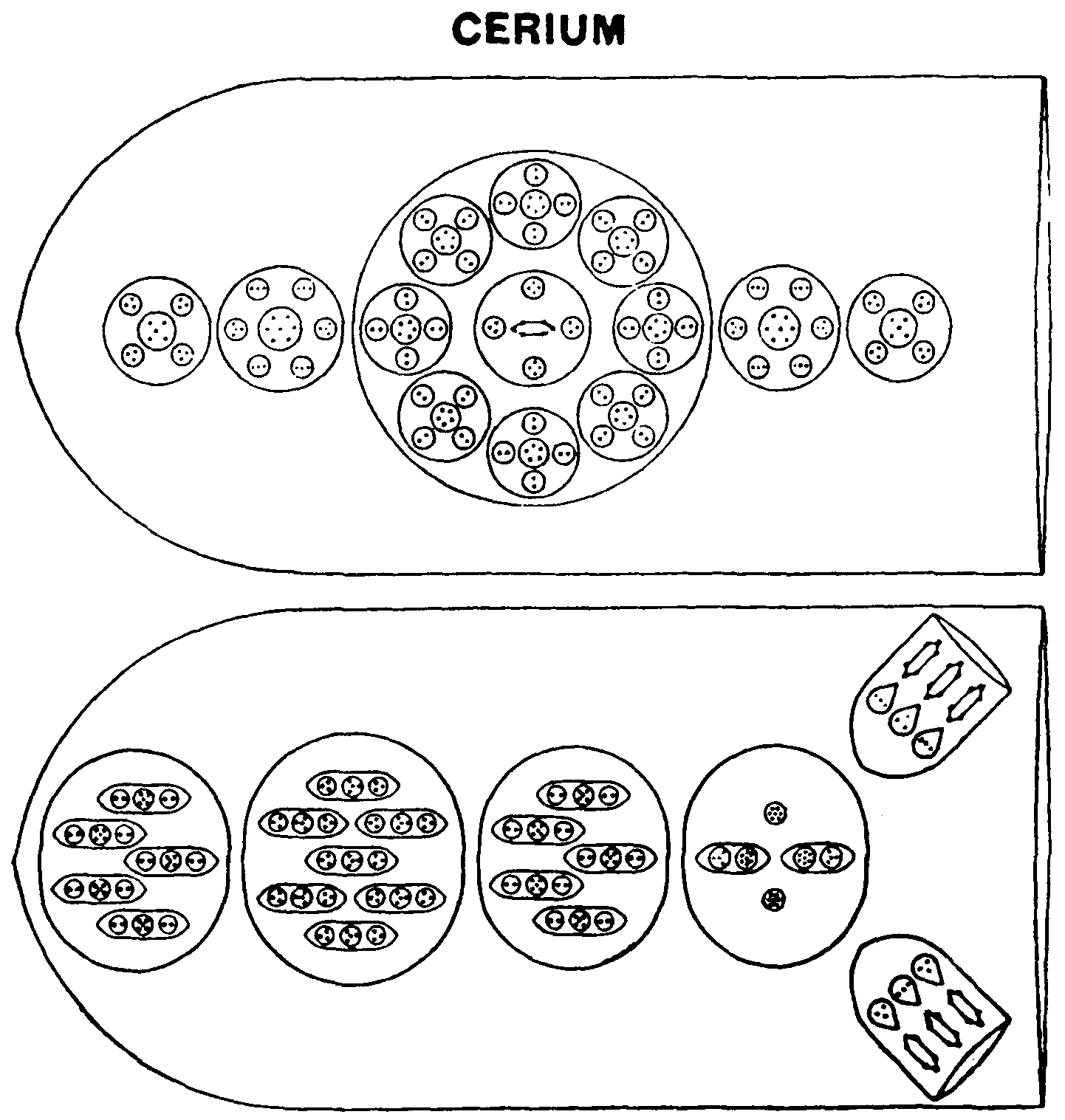
FIG. 122. CERIUM. FUNNELS A AND B
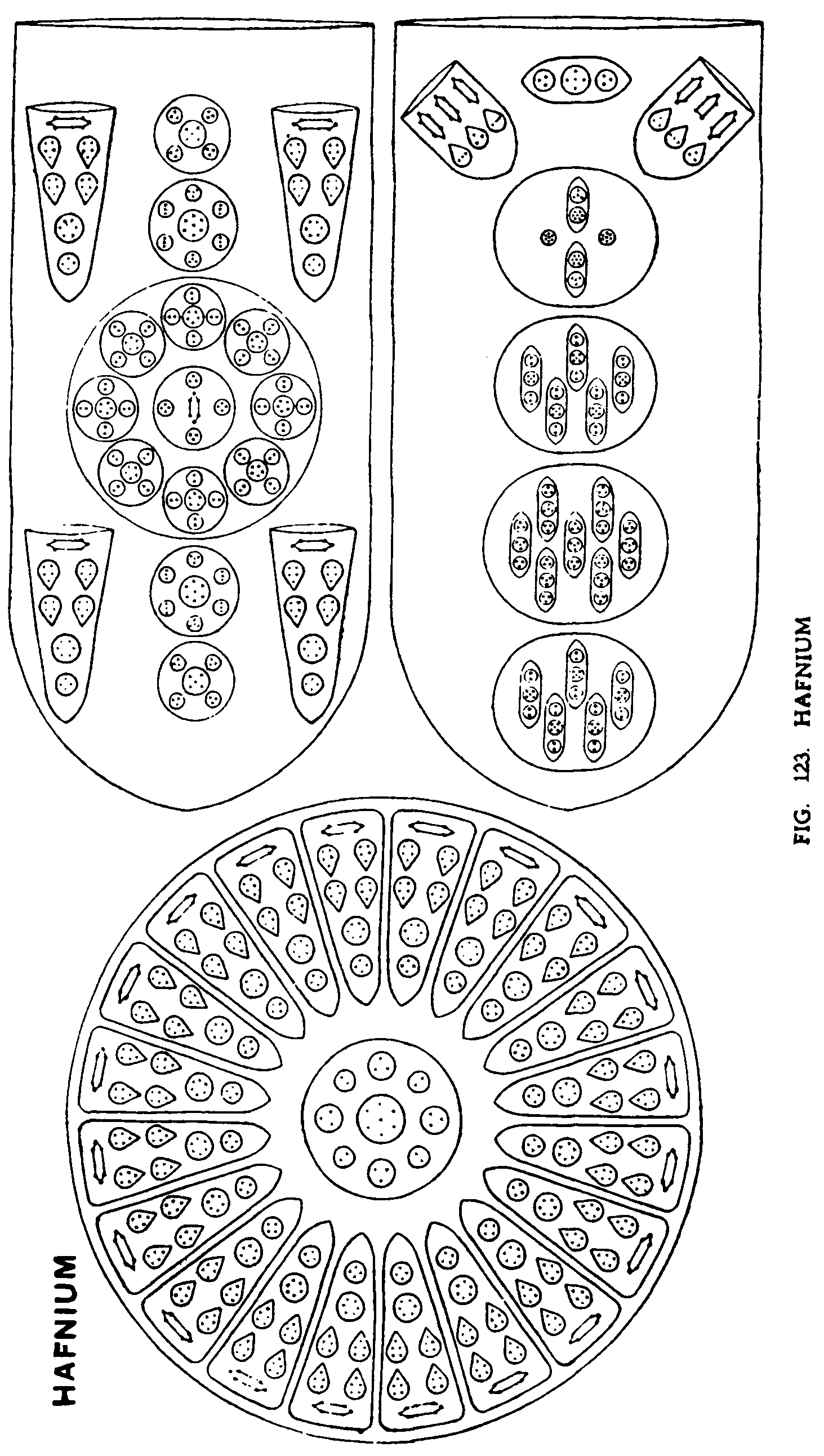
ATOMIC
NO. 72. HAFNIUM
This element is also an octahedron. It is similar to Cerium in having two types of funnels. Fig. 123.
Central globe. The central globe is formed on the same pattern as that of Cerium. The central sphere is Ce27, and this is surrounded by 20 ovoids. These ovoids are each of 36 Anu, Hf36. The total number of Anu in the central globe is 747, Hf747.
Type A. These four funnels contain the Zr212 group, but four ovoids Hf36, similar to those in the central globe, are added. This makes a total of 356 Anu.
Type B. These funnels are very similar to those in Cerium. We have first the Ca160, next the Ce36 group, and then the two funnels of Carbon, still without their linking Anu. In addition a small ovoid, Gell, containing two triplets and a quintet, floats at the mouth of the funnel The total number of Anu is 260.
Hafnium
= Hf747+4(Zr212+4Hf36)+4(Ca160-f-Ce36-hC27-FC26-1-Gell)
214
OCCULT CHEMISTRY
ATOMIC
NO. 90. THORIUM
This element reproduces the features of Cerium while adding to them. Oddly enough, the Carbon atom has here resumed the finks which it lost in Cerium and Hafnium. The Lithium spikes are here again, brought over presumably from Actinium, but as Thorium is an octahedron there is now room for them in the funnels. The special adaptation of the Antimony funnels has evidently come along the spiral from Actinium also, and the central sphere is Lu819. Fig. 124.
Central globe. This is the Lu819 which is used in so many elements, including Radium and Uranium. It is formed from the Ce27 group at the centre and 24 ovoids of Ba33.
Type A contains the Zr212 and adds Sb128 and the group Sb113+3, or Ac116, which occurs in Actinium. The total contains 456 Anu. Fig. 125.
Type B is formed of three groups. First a large group containing Ca160, Mo46 and # C. (The Carbon funnels have their linking Anu in this case.) Then, on either side of the large group, we find a Lithium spike, 2Li63. The total contains 386 Anu. Fig. 126.
Thorium
= Lu819+4(Zr212+Sb128J-Ac116)-1-4(Ca160 h-Mo46+C27-f-C26+1-t-2Li63)
THE
OCTAHEDRON GROUP A 215
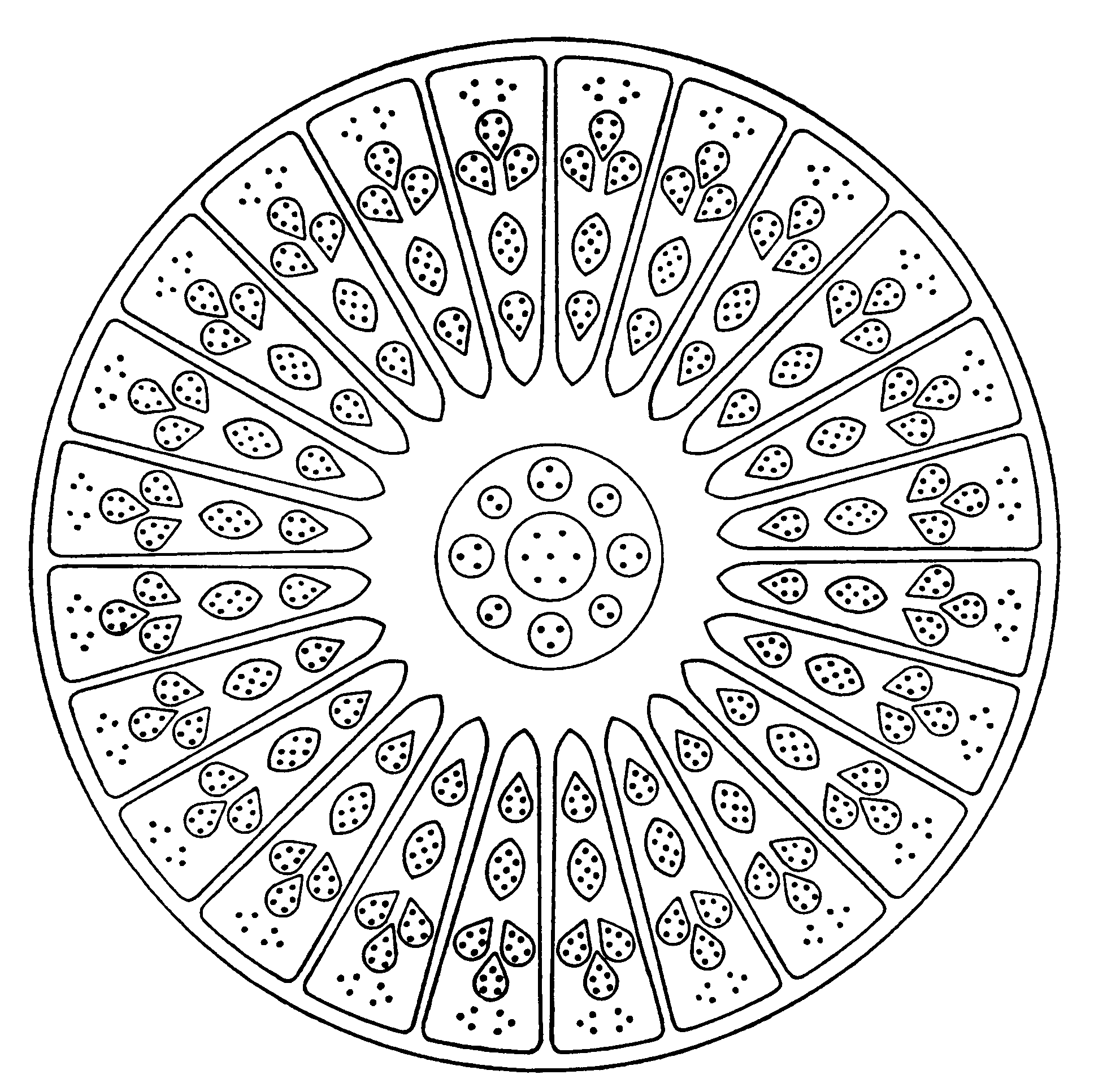
FIG.
124. THORIUM CENTRE, Lu819
216 OCCULT CHEMISTRY
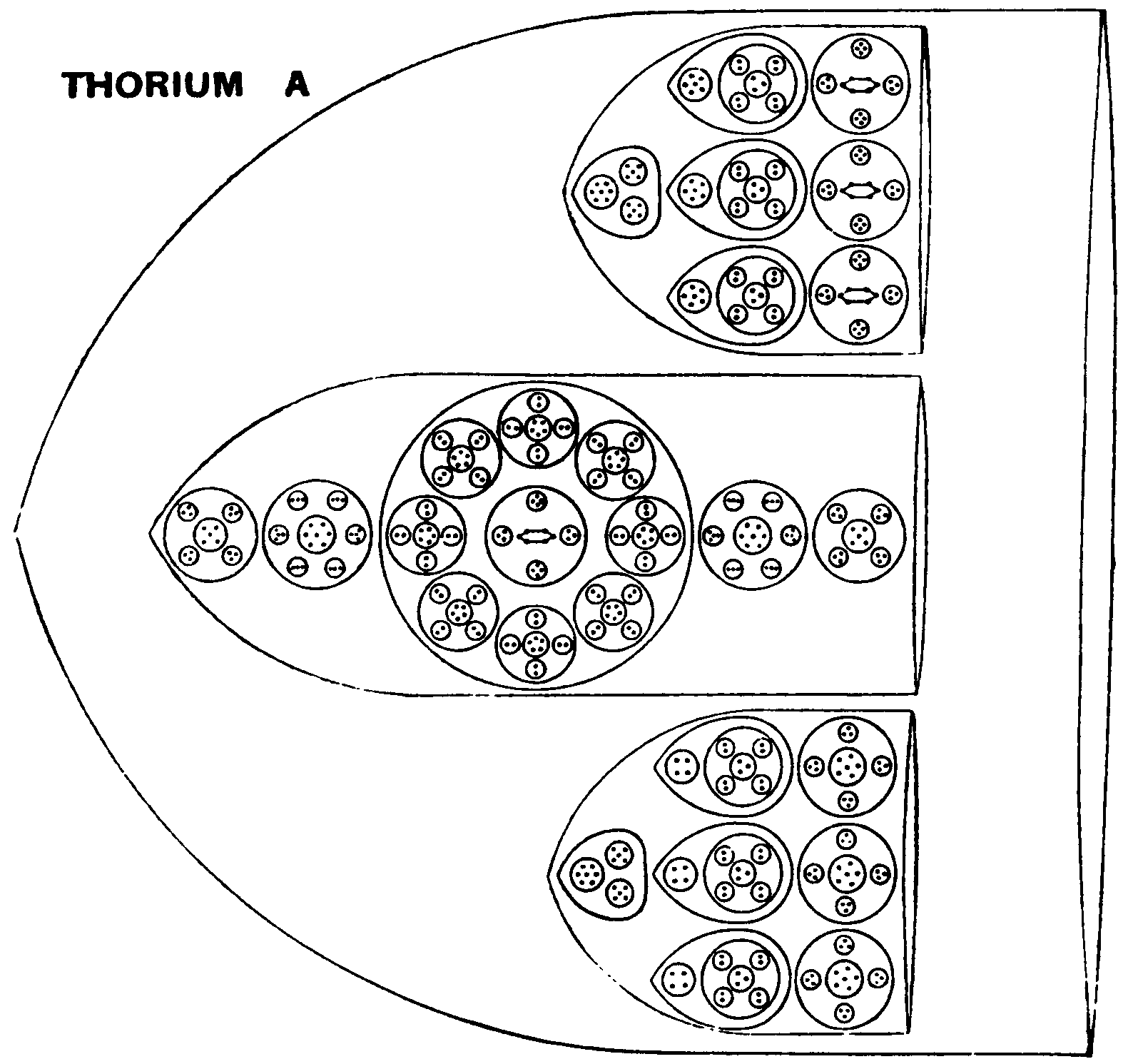
FIG.
125. THORIUM FUNNEL A
THE OCTAHEDRON GROUP A 217
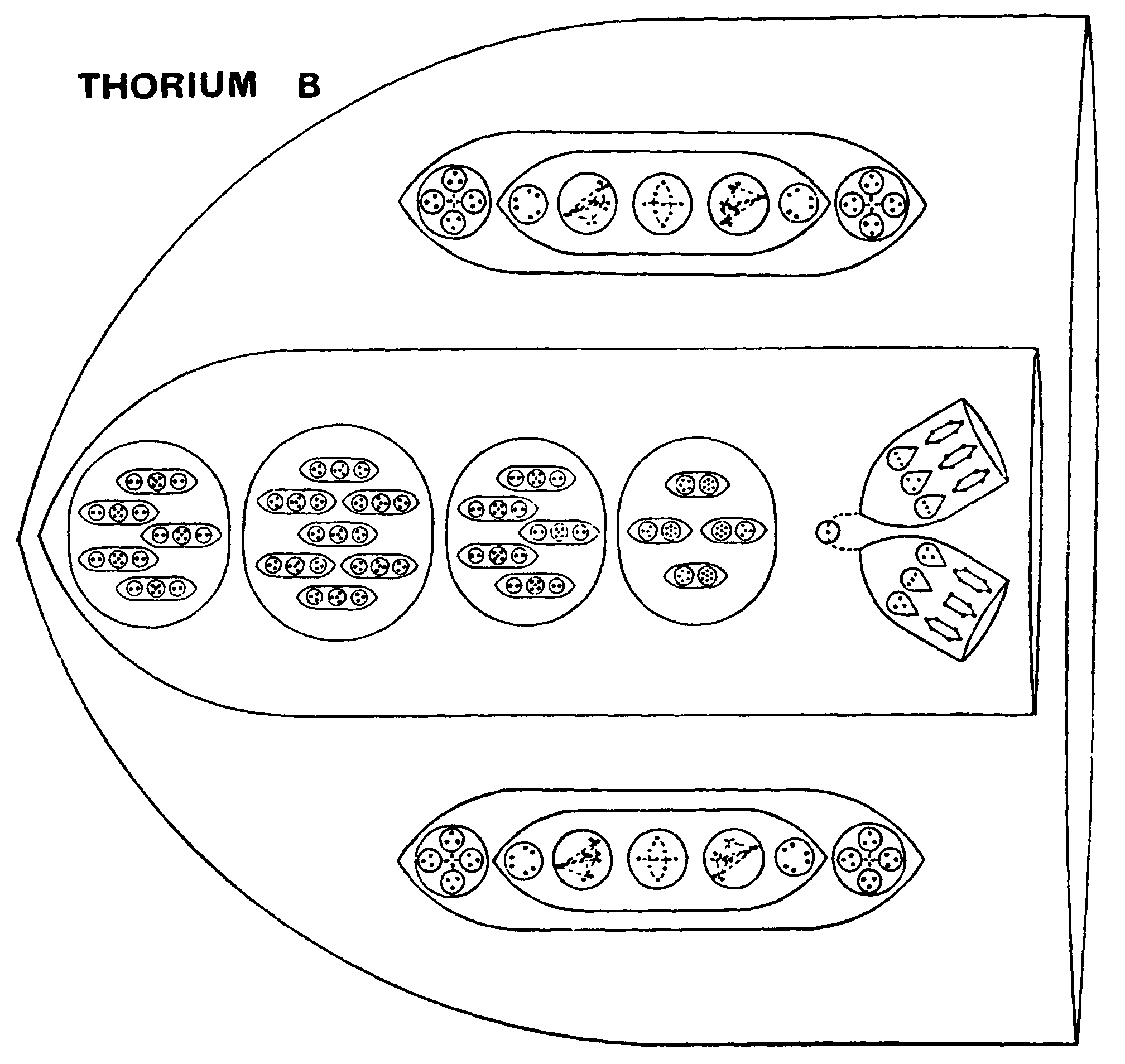
FIG.
M THORIUM, FUNNEL. B
218
OCCULT CHFNIISTRY
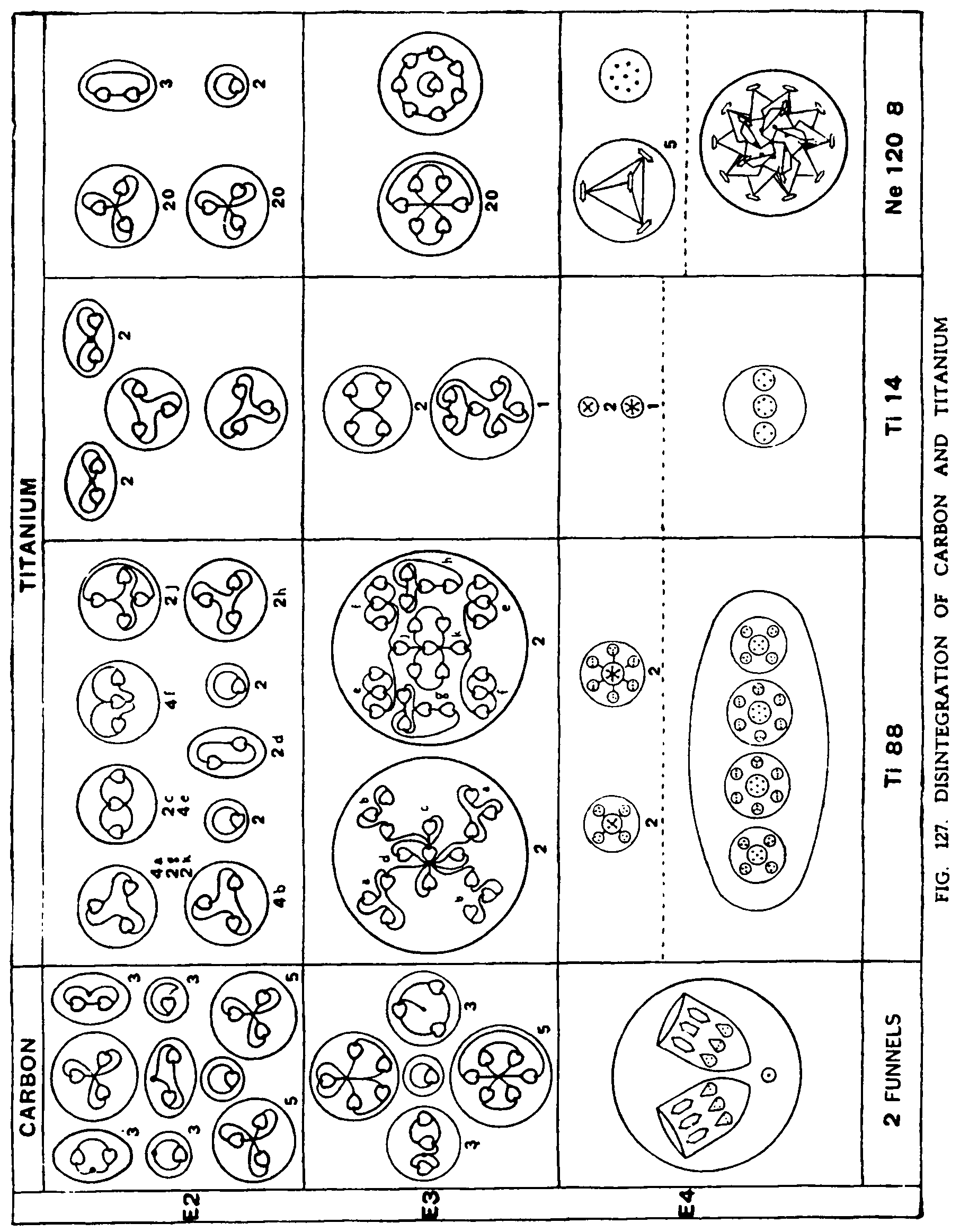
Carbon is the typical octahedron, and a clear understanding of this element will enable us to follow easily disintegration of the various members of these groups. Fig. 127.
On the E4 level the atom breaks up into four spheres each consisting of a pair of funnels connected by a single Anu.
On the E3 level the five Ad6 groups give the usual sextets and the truncated ' cigar' of five Anu forms a quintet. The leaves yield two forms of triplets and the unit remains alone.
On
the E2 level the sestets each give two triplets, the quintet a triplet
and a duad : the triplets give duads and units and the single unit remains
free.
The ring liberates the twelve spheres, Ti14, and the central globe, Ne120+8, is also set free.
At the second stage on the E4 level the I C group remains together, as in Carbon, but the other groups break up still further as shown in Fig. 127.
The central globe gives five tetrahedrons, SAd24, and a group of eight Anu from the centre. These make a ring of seven Anu round a central one.
Thus on the E4 level we get 62 groups. The four 1 C, 16 spheres from the four arms, 36 spheres from the ring and 6 bodies from the central globe.
On the E2 and E3 levels the bodies behave as shown in Fig. 127. The funnels act as in Carbon; Ti88 yields star-like and cruciform bodies on the E3 level, and simple triplets, duads and units on the E2. Each Ti14 gives a sestet and two quartets on the E3 level and triplets and duads on the E2 level
The
central sphere behaves as in Neon and Occultum, while the group of eight
Anu forms a ring of seven Anu with one in the centre on the E3 level, and
breaks up
into
duads and units on the E2..
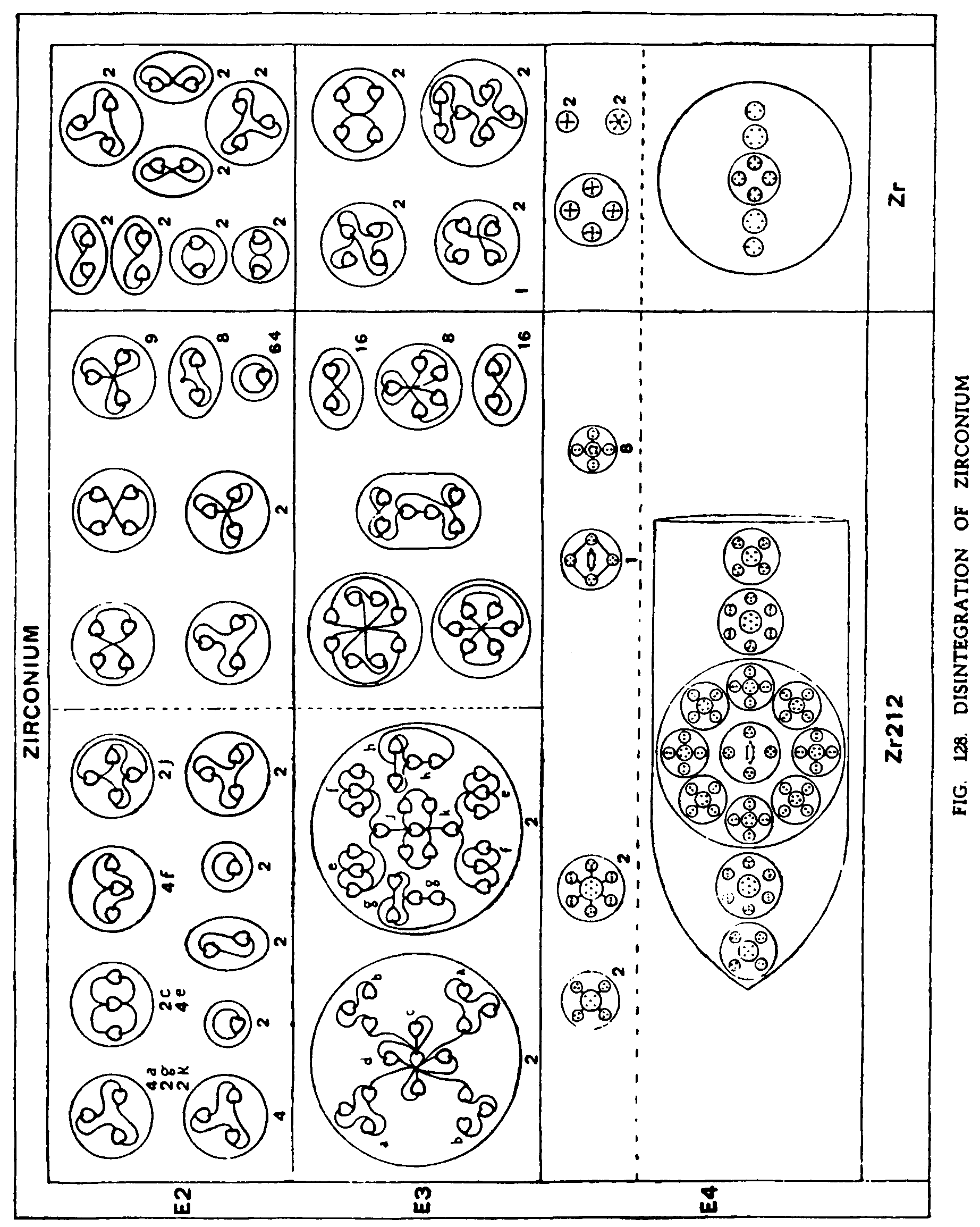
Zirconium also breaks up in two stages on the E4 level. Fig. 128. The four sets of Carbon funnels are liberated as well as four Zr212 from the arms. Twelve Zr36 are set free from the rind and the central globe, Ne120-f-8, is also liberated.
At the second stage of E4 the Carbon funnels remain together but the other groups break up. The Zr212 gives the four spheres which make up Ti88, and nine globes from its central portion, eight Zr13 and one Ga20.
The spheres from the ring, Zr36, each liberate five bodies, four of which we have already seen in Titanium, and one of which is a group of 16 Anu. These follow the Sodium model.
The central globe liberates six bodies as in Titanium, five Ad24 and one group of eight Anu.
On the E3 level the 1 C acts as shown under Carbon. The Zr212 forms the complex bodies already seen in Titanium and also an octet, two sextets of different types. eight quintets (from the truncated cigars in the Zr13) and 32 duads.
222
OCCULT CHEMISTRY
Fig. 129 shows the Octahedron Group A in a condensed form, from which the relationships in this group may be studied.
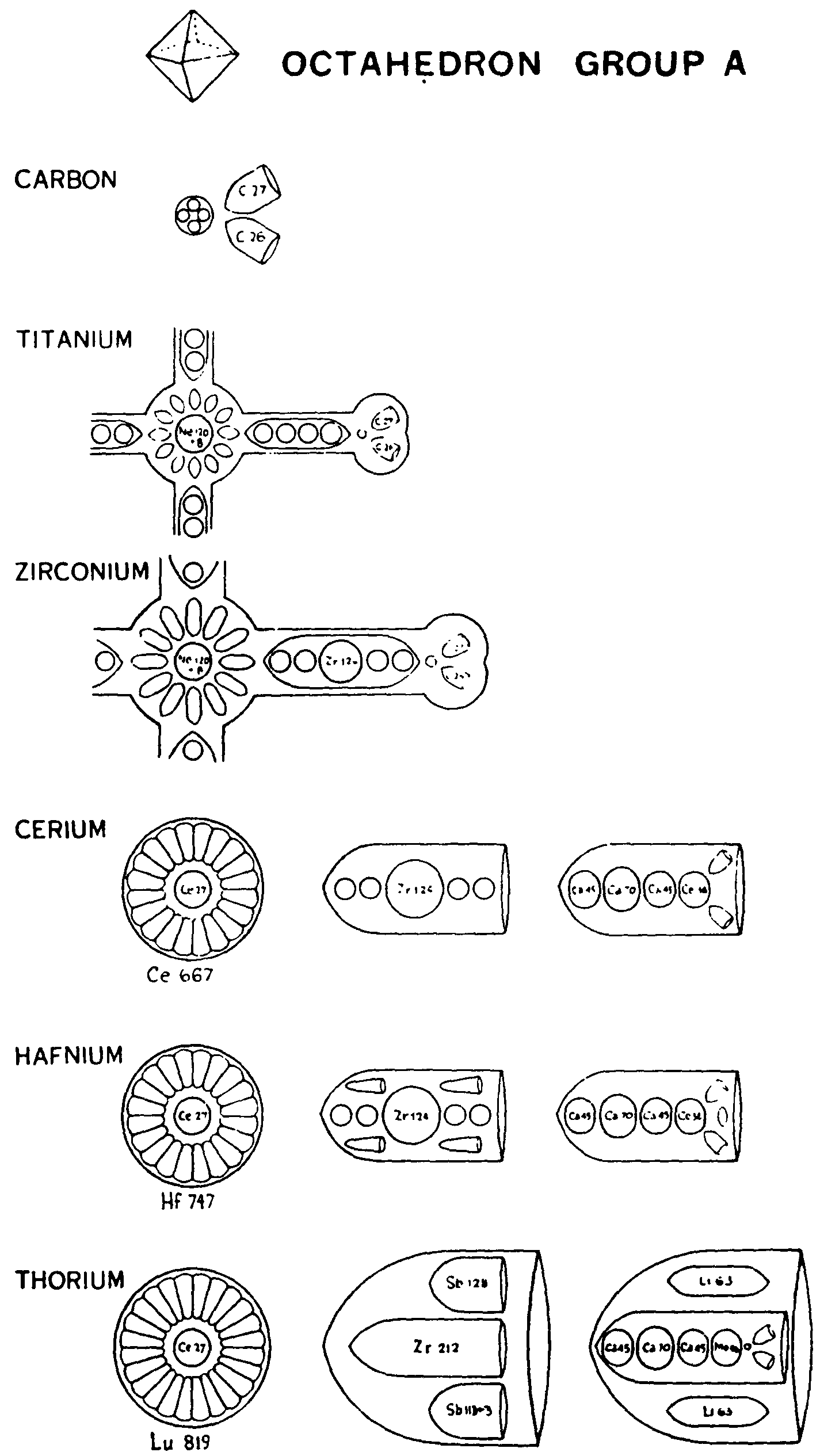
FIG.
129. THE OCTAHEDRON GROUP A